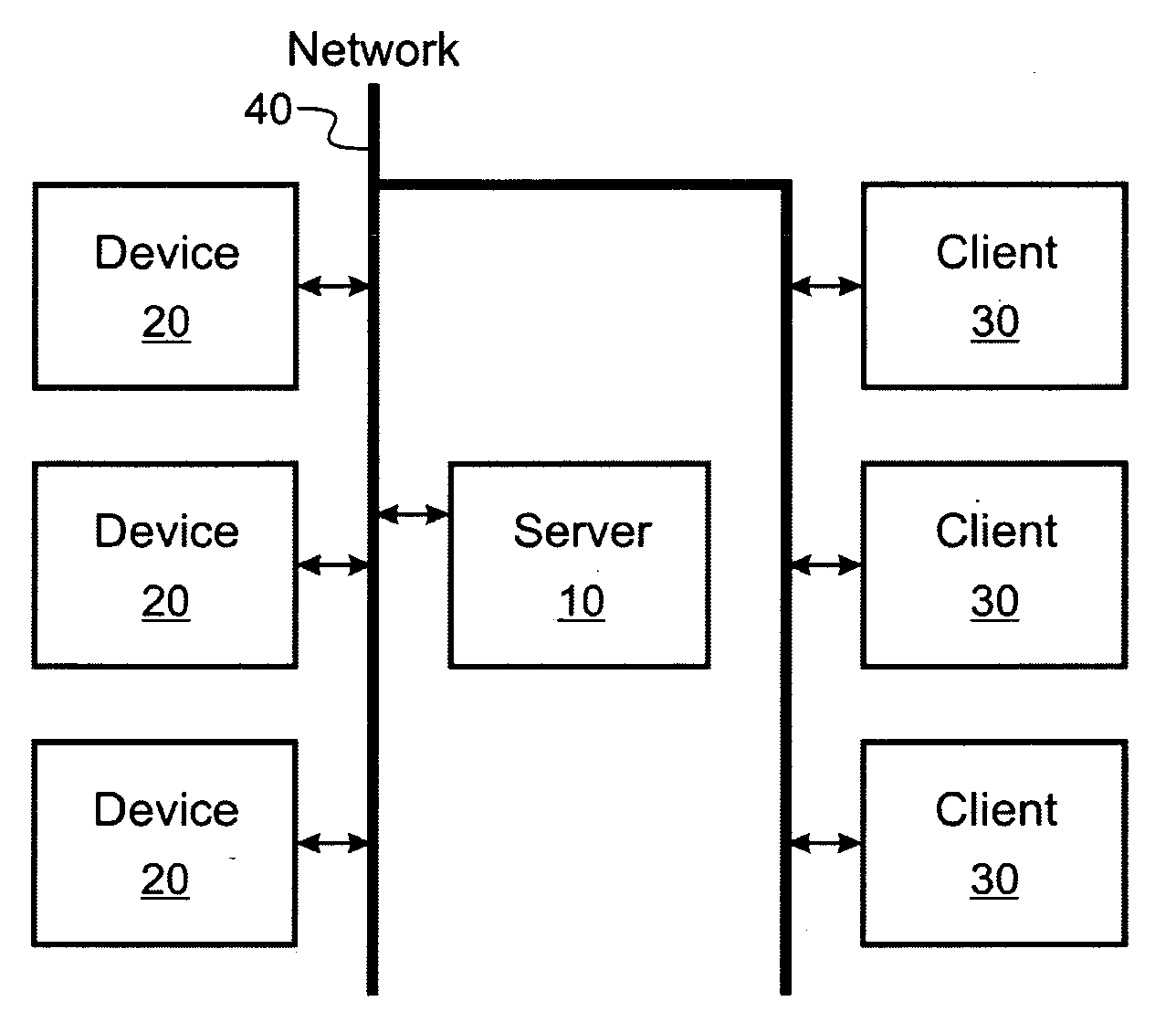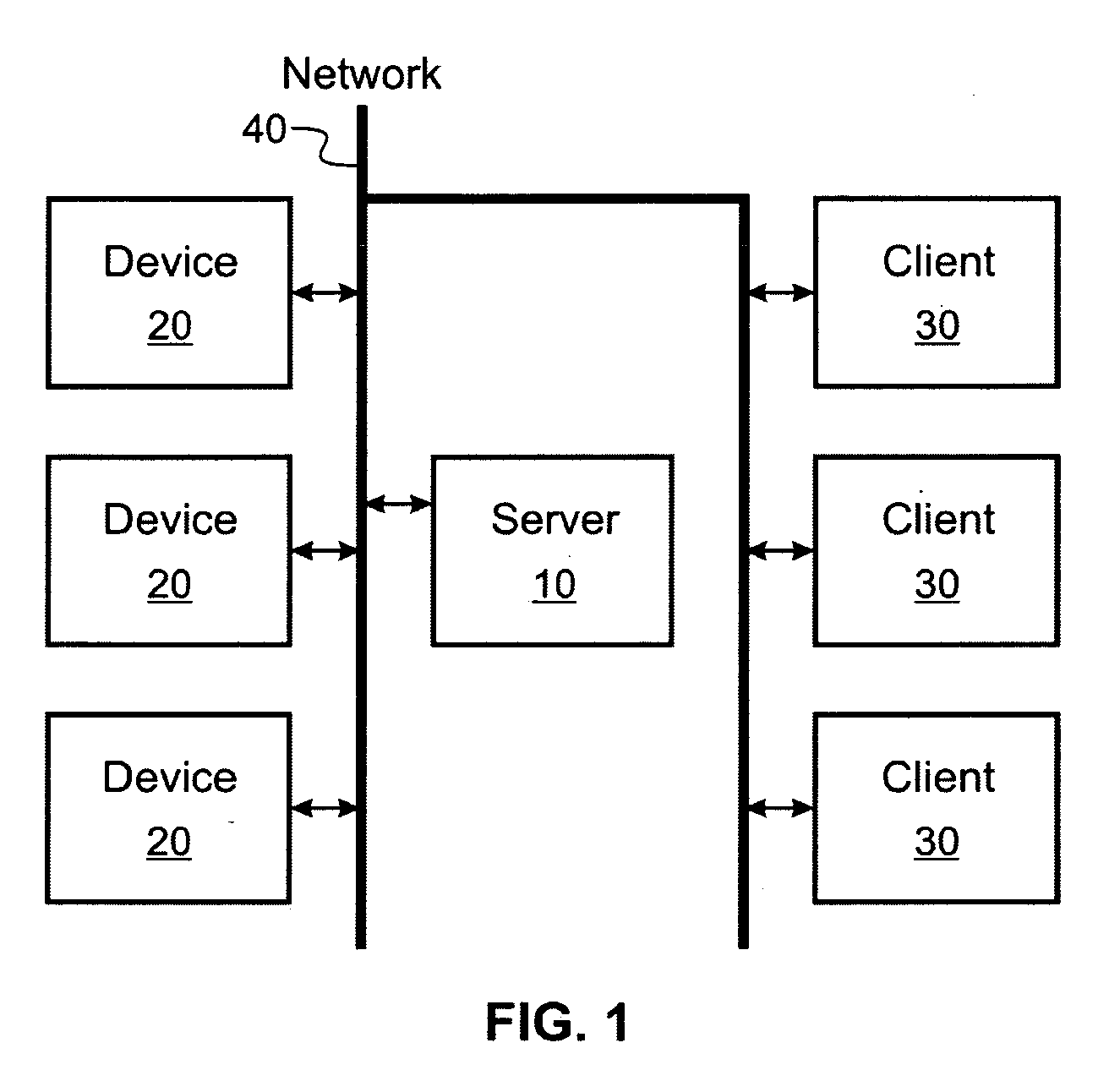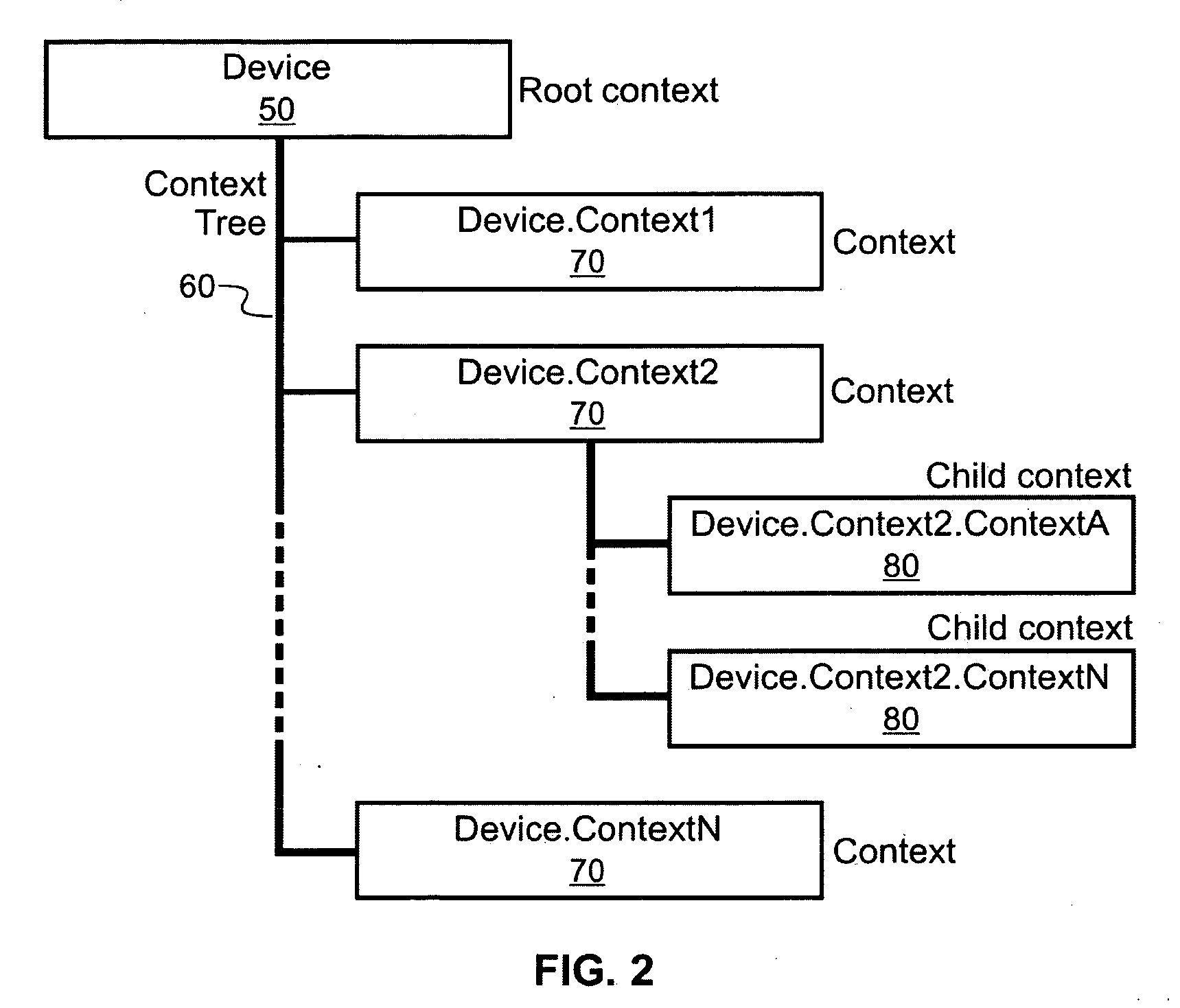System for Remote Configuration, Control, and Monitoring of Devices Over Computer Network Using Central Server
a central server and remote configuration technology, applied in the field of remote configuration, control, and monitoring of machines, equipment or devices over computer networks, can solve the problems of inability to combine the configuration, control, and monitoring of each such device incorporating its own web server with the configuration, control, and monitoring of another device, and achieve the effects of reducing the complexity and cost of work, reducing the cost of maintaining a data connection, and being inexpensive and fast to combin
- Summary
- Abstract
- Description
- Claims
- Application Information
AI Technical Summary
Benefits of technology
Problems solved by technology
Method used
Image
Examples
Embodiment Construction
[0059]Although the following detailed description contains many specifics for the purpose of illustration, anyone with ordinary skill in the art will appreciate that many variations and alterations to the following details are within the scope of this invention. Accordingly, the following preferred embodiments of the invention are set forth without any loss of generality to, and without imposing limitations upon, the claimed invention.
The System
[0060]A general block diagram of the system according to a preferred embodiment of the invention is shown on FIG. 1. The system comprises a central server 10, one or more devices 20, and one or more clients 30. The server 10, devices 20, and clients 30 are connected to the TCP / IP network 40.
[0061]The central server 10 comprises a JAVA application running on a computing platform that offers JAVA virtual machine for execution of the said JAVA application. This computing platform can be of any hardware type, and use Microsoft Windows, Linux, Fre...
PUM
 Login to View More
Login to View More Abstract
Description
Claims
Application Information
 Login to View More
Login to View More - R&D
- Intellectual Property
- Life Sciences
- Materials
- Tech Scout
- Unparalleled Data Quality
- Higher Quality Content
- 60% Fewer Hallucinations
Browse by: Latest US Patents, China's latest patents, Technical Efficacy Thesaurus, Application Domain, Technology Topic, Popular Technical Reports.
© 2025 PatSnap. All rights reserved.Legal|Privacy policy|Modern Slavery Act Transparency Statement|Sitemap|About US| Contact US: help@patsnap.com



